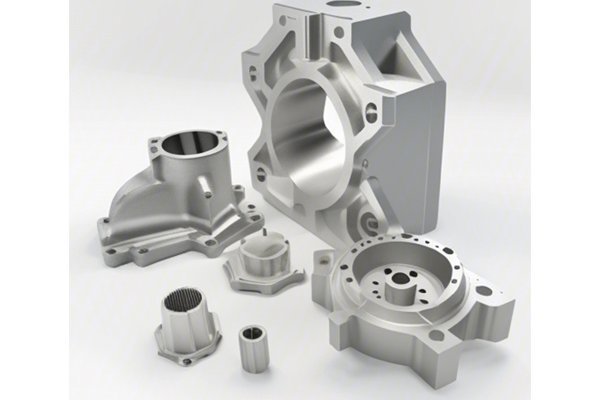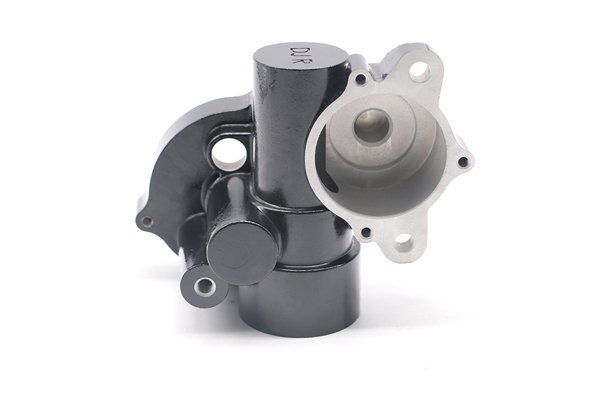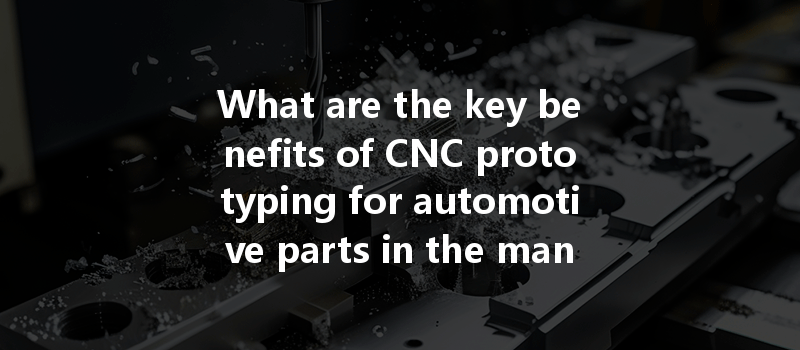Did you know that 75% of automotive failures can be traced back to issues in the design phase? This staggering statistic highlights how crucial it is for manufacturers to utilize advanced techniques and technologies during the prototyping stage. In the automotive industry, where precision, reliability, and performance standards are paramount, CNC (Computer Numerical Control) prototyping has emerged as a transformative solution.
But what exactly is CNC prototyping, and how does it affect the manufacturing of automotive parts? In this blog post, we will explore the key benefits of CNC prototyping specifically tailored for the automotive sector. We’ll delve into the challenges facing automotive manufacturers, the advantages of using CNC prototyping, and how it can optimize production efficiency and product quality. Finally, we’ll summarize the core techniques that make CNC prototyping indispensable for the modern automotive industry.
Understanding CNC Prototyping in the Automotive Context
CNC prototyping involves the use of computer-controlled machines to create precise parts based on digital models. This technology allows manufacturers to fabricate components from various materials, including metals, plastics, and composites, with impeccable accuracy. In the automotive sector, CNC prototyping can mean the difference between a successful launch and a costly recall. 
The automotive industry is rife with challenges, including tight deadlines, increasing customer demands, and stringent safety regulations. Manufacturers must produce parts that not only meet exact specifications but also withstand rigorous testing conditions. Here are some common challenges faced:

CNC prototyping offers several key benefits that address these challenges and support automotive manufacturers:
2.
One of the standout advantages of CNC prototyping is the remarkable precision it offers. Computer-controlled machines operate based on detailed digital models, resulting in parts that conform to specifications with negligible tolerances. This accuracy is critical in automotive applications, where even minor deviations can lead to major performance issues.
2.
CNC prototyping allows for rapid design iterations. As automotive engineers refine their designs, they can quickly make adjustments to the digital model and produce updated prototypes. This agility fosters creativity and encourages innovation, enabling manufacturers to respond to market demands and technological advancements.
2.
While the initial setup for CNC prototyping might be higher than traditional methods, long-term cost benefits are significant. Quick turnarounds and reduced material waste lower production costs. Additionally, by identifying design flaws early in the prototyping stage, manufacturers can avoid expensive revisions later in the process.
2.
CNC machines can work with a wide range of materials, including aluminum, steel, plastics, and composites. This versatility enables automotive manufacturers to experiment with different materials and select those that offer the best performance characteristics for specific applications.
2.
Prototypes created through CNC machining allow for real-world testing before full-scale production. This capability enables manufacturers to identify potential issues in functionality, ergonomics, and durability, making the necessary adjustments before products reach the assembly line.
2.
By significantly shortening the prototyping phase, CNC machining allows automotive companies to bring products to market faster. In a highly competitive industry, this rapid deployment can facilitate a first-mover advantage and lead to increased market share.
Implementing CNC prototyping requires a strategic approach to ensure optimal results. Here’s a step-by-step guide to harnessing the full potential of CNC prototyping:

3.
Before delving into CNC prototyping, automotive manufacturers should clearly outline the project’s objectives and requirements. This includes understanding the specific performance criteria for the parts being prototyped, determining which materials are suitable, and establishing project timelines.
3.
Creating a detailed 3D model is vital for successful CNC prototyping. Engineers can use CAD (Computer-Aided Design) software to create a virtual representation of the part, incorporating all desired features and specifications.
3.
Different CNC machines are designed to serve specific purposes. Manufacturers should assess their needs based on factors like part complexity, material type, and volume requirements. Options include CNC milling, turning, and advanced additive manufacturing systems.
3.
Once the digital model and machine are ready, the prototyping process begins. Precision CNC machines convert the digital file into a tangible prototype by removing material accordingly. The result is a highly accurate representation of the final product.
3.
After fabrication, prototypes should undergo rigorous testing to assess their functionality and performance. Any issues identified during testing will require iterations on the design, leading to an updated digital model and another round of CNC machining.
3.
Once the prototype meets all design criteria and passes functional tests, manufacturers can transition to full-scale production. This phase should involve adjustments to production processes based on insights gained from the prototyping stage.
Case Study 1: Electric Vehicle Components
A leading electric vehicle manufacturer faced challenges in producing lightweight battery housings. By utilizing CNC prototyping, the company developed prototypes from advanced composites that reduced weight without sacrificing strength. This not only improved the vehicle’s efficiency but also accelerated the product development timeline.
Case Study 2: Engine Components
Another automobile manufacturer needed a complex engine component that had to withstand extreme stress conditions. The manufacturer employed CNC prototyping to create multiple iterations of the part, utilizing both aluminum and titanium. Rigorous testing led to selecting the optimum material, significantly enhancing engine performance.
As technology continues to evolve, several trends are transforming CNC prototyping for the automotive industry:
: The Imperative of CNC Prototyping in the Automotive Industry
In today’s fast-paced automotive landscape, effective prototyping has become a cornerstone of successful product development. CNC prototyping not only addresses significant manufacturing challenges—such as precision, cost management, and time-to-market—but also empowers manufacturers to innovate fearlessly while maintaining the highest standards of quality.
To summarize, the key benefits of CNC prototyping include enhanced precision, agility in design modifications, cost-effectiveness, material versatility, improved functionality testing, and accelerated time-to-market. By understanding the meticulous process of CNC prototyping and implementing it strategically, automotive manufacturers can secure their place at the forefront of the industry.
In conclusion, as we reflect on the importance of CNC prototyping in automotive manufacturing, it’s vital to appreciate how this technology not only shapes the vehicles of today but also drives the innovations of tomorrow. The implications of mastering CNC prototyping extend far beyond the production floor; they resonate throughout supply chains, customer satisfaction, and, ultimately, the future of mobility. It’s a worthy consideration for automotive engineers, designers, and decision-makers alike—one that promises to unlock new levels of performance, efficiency, and sustainability in a rapidly evolving industry.




